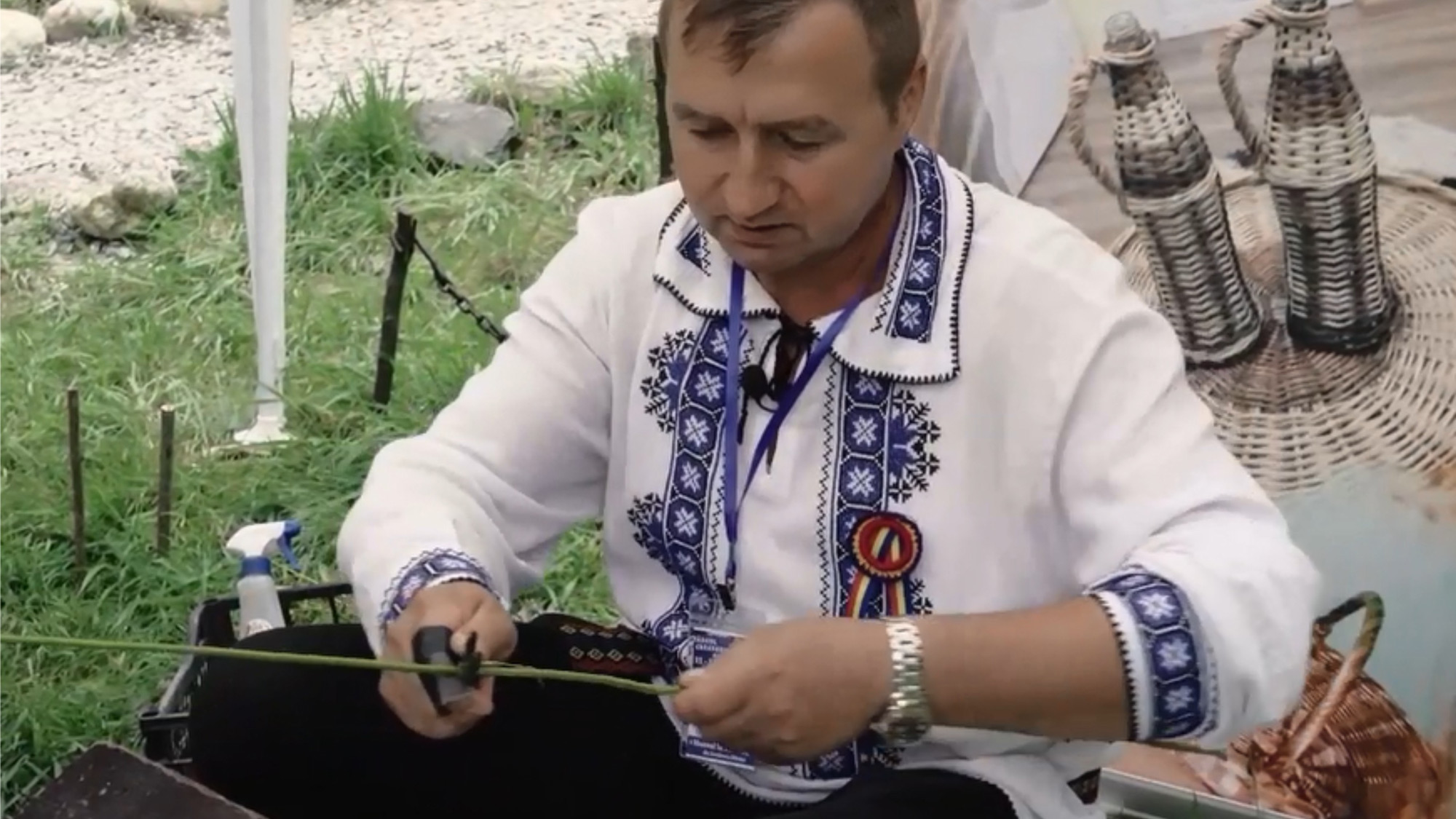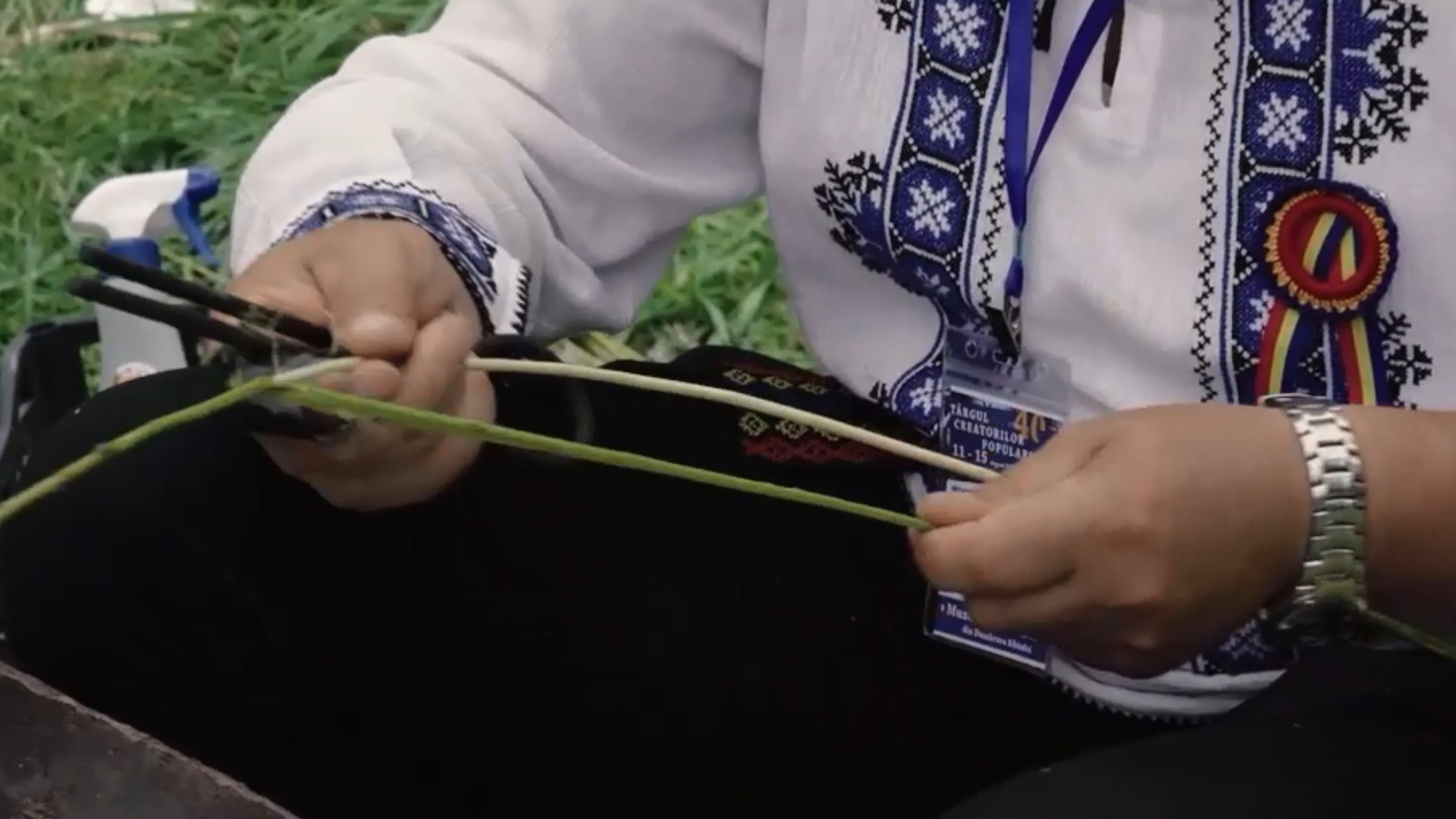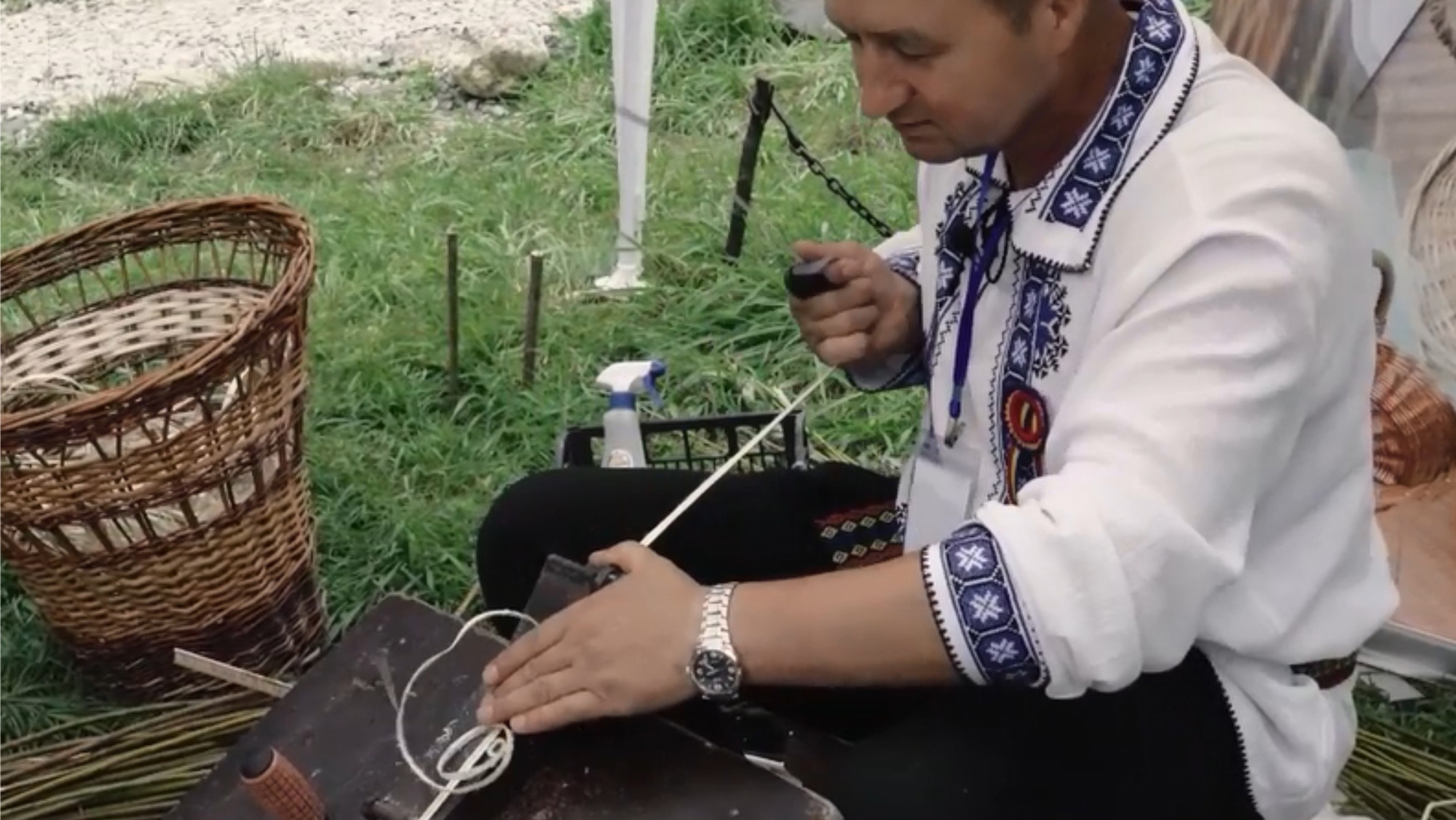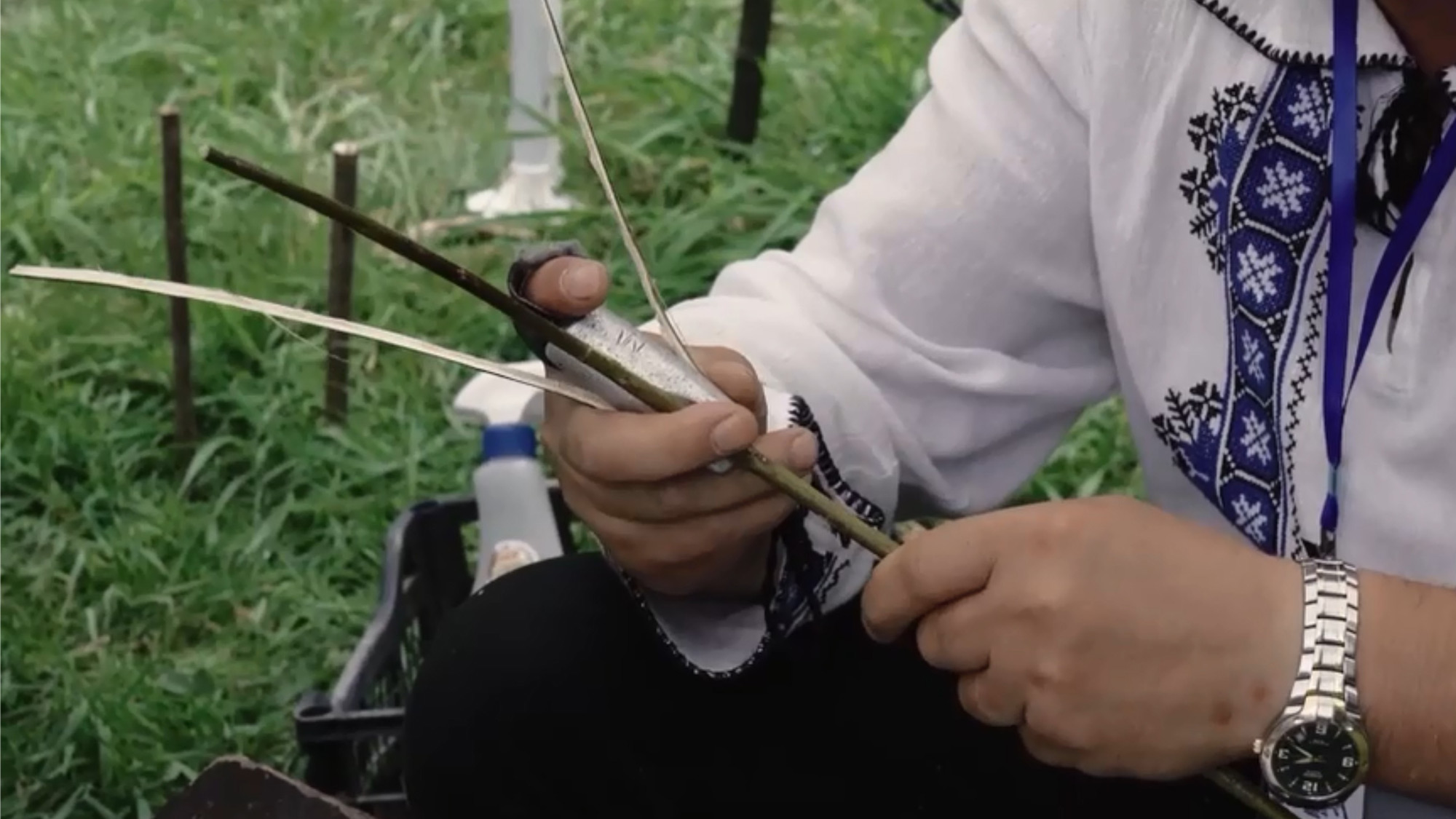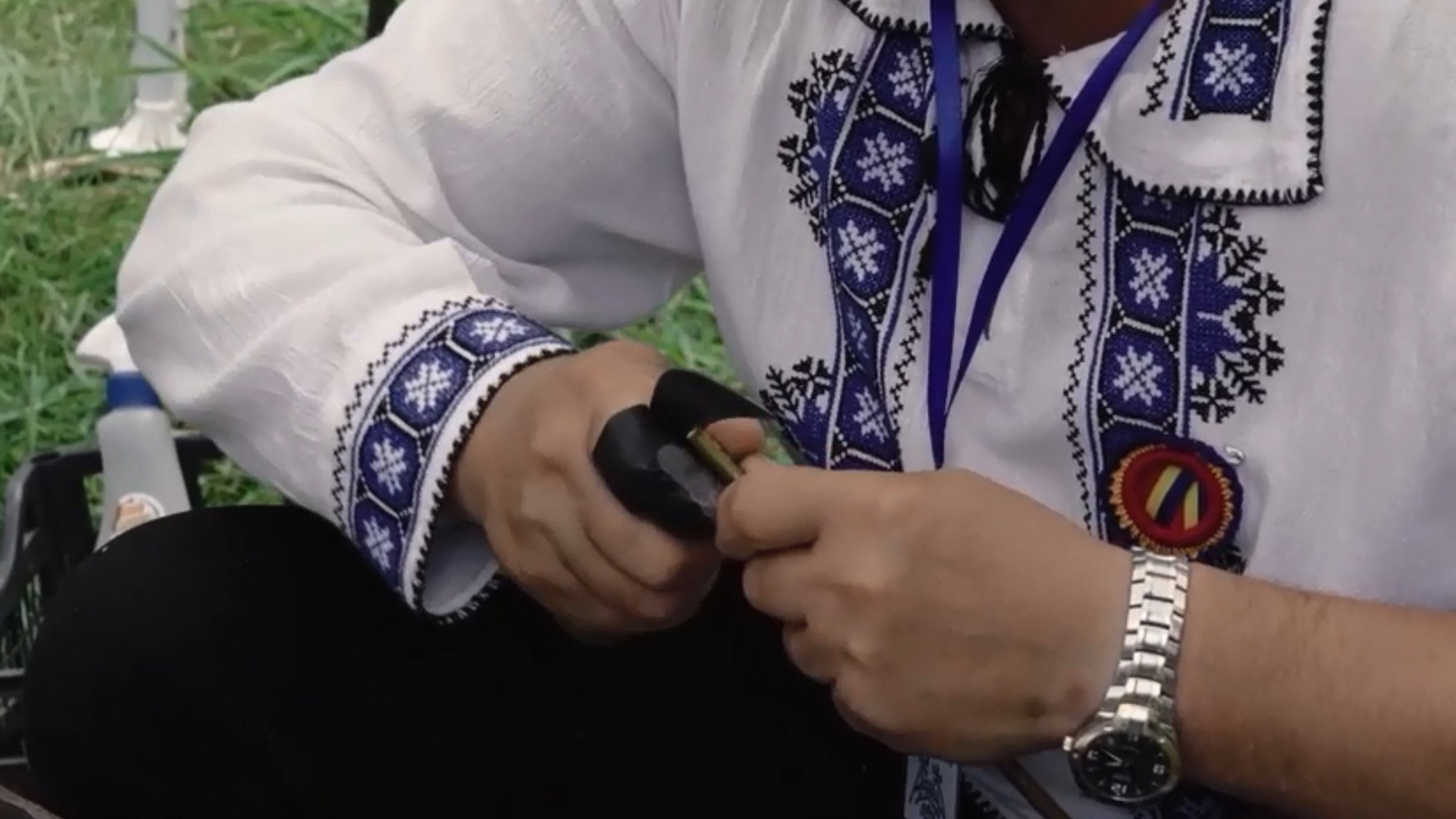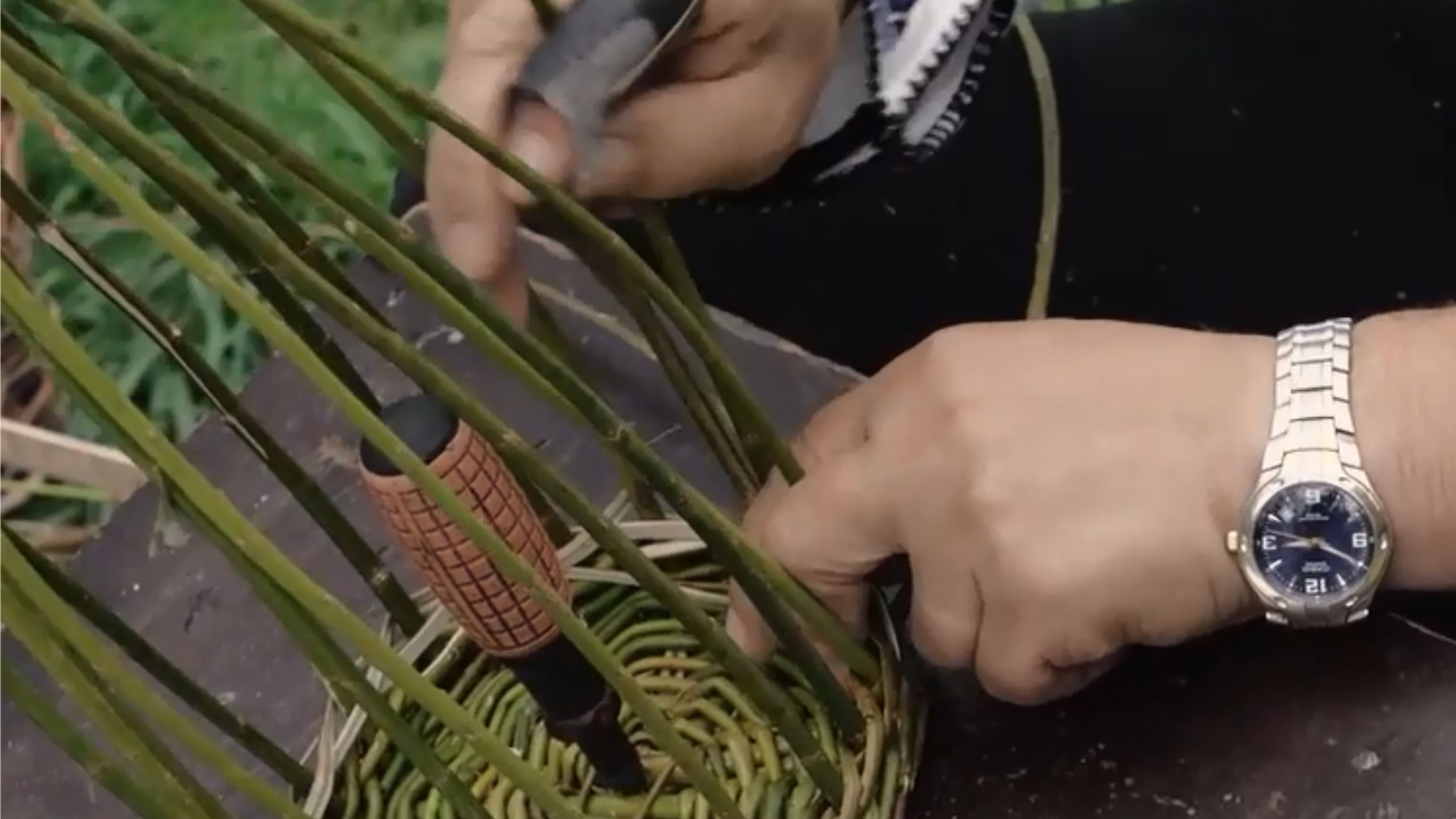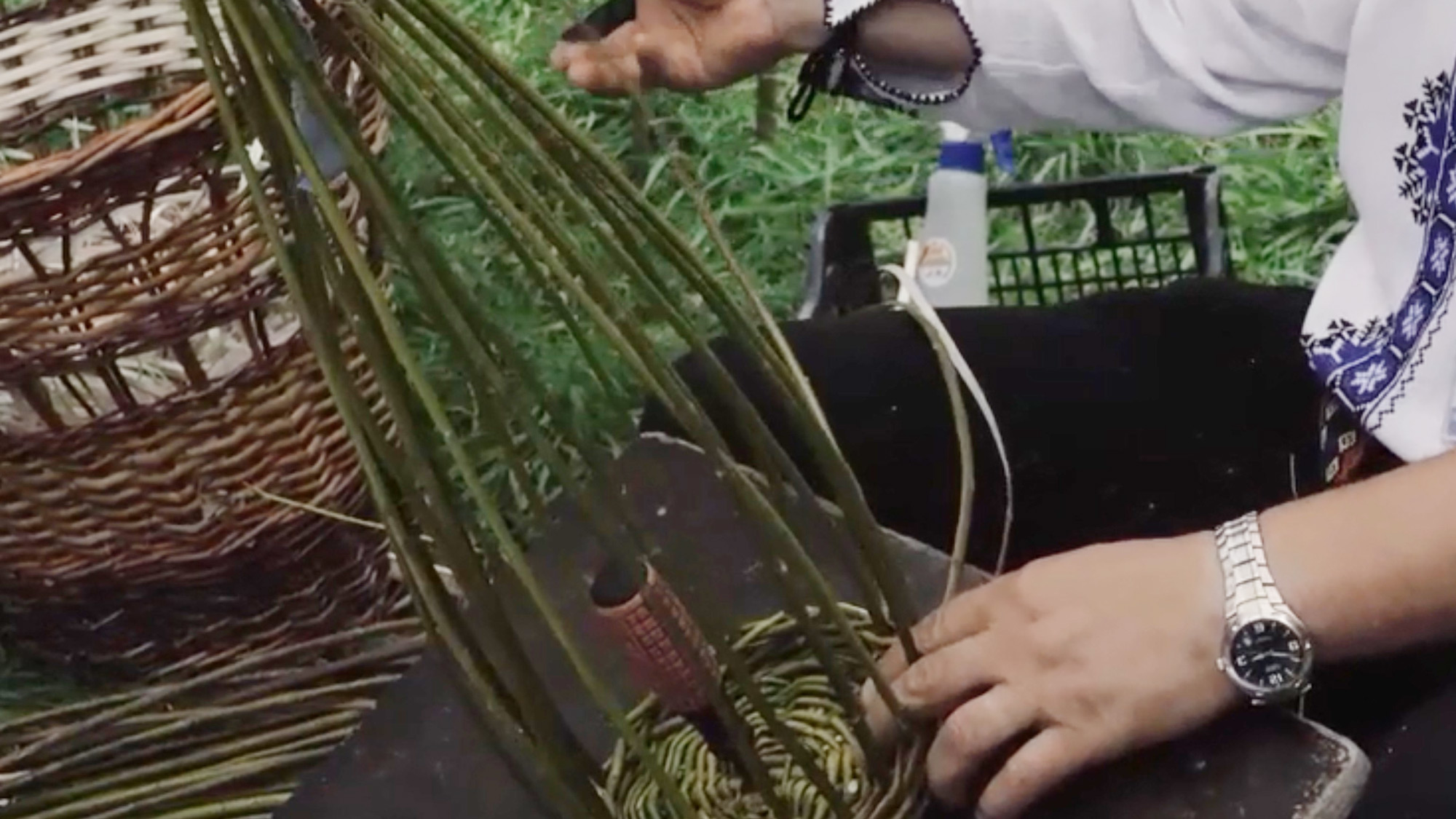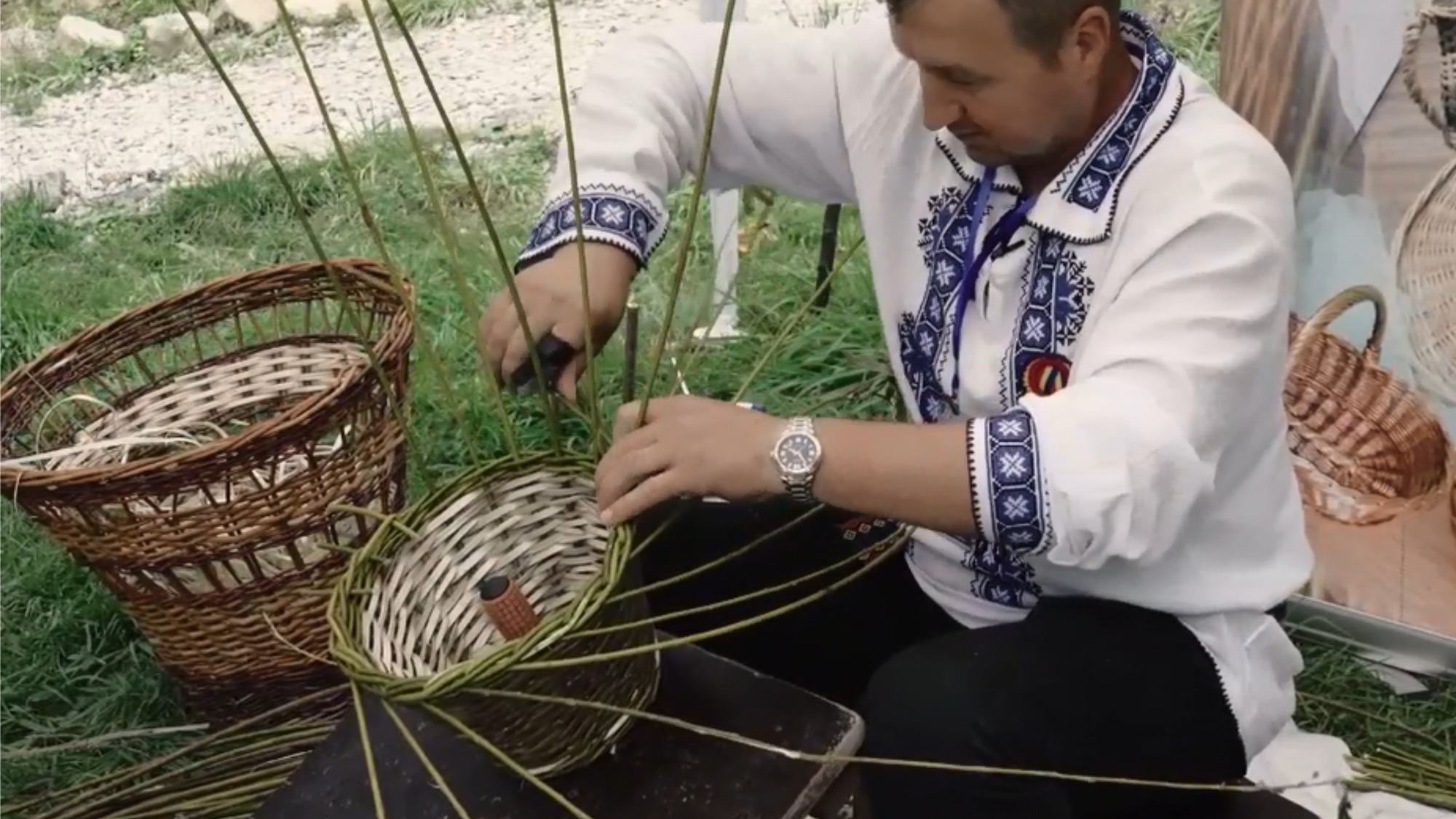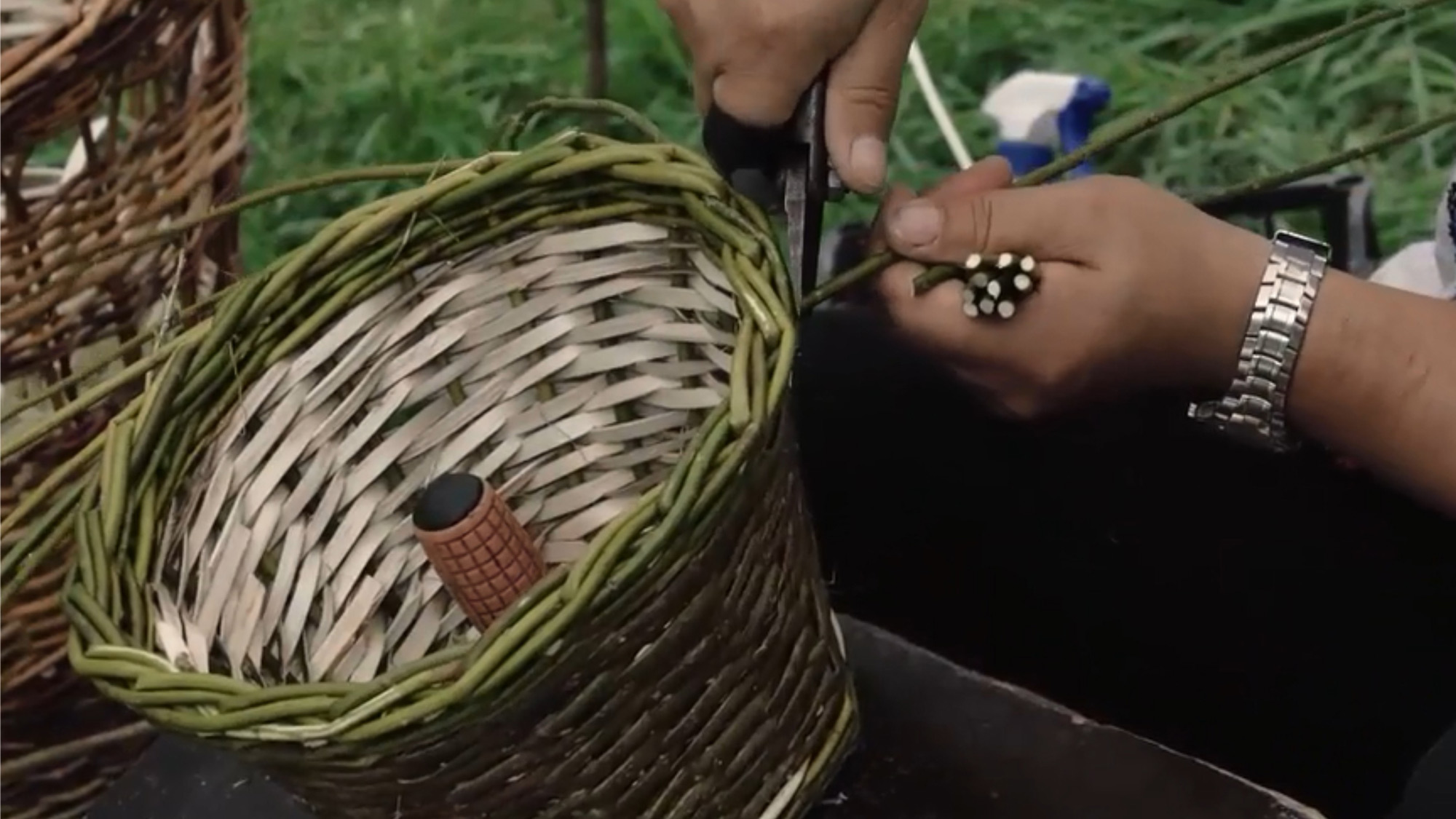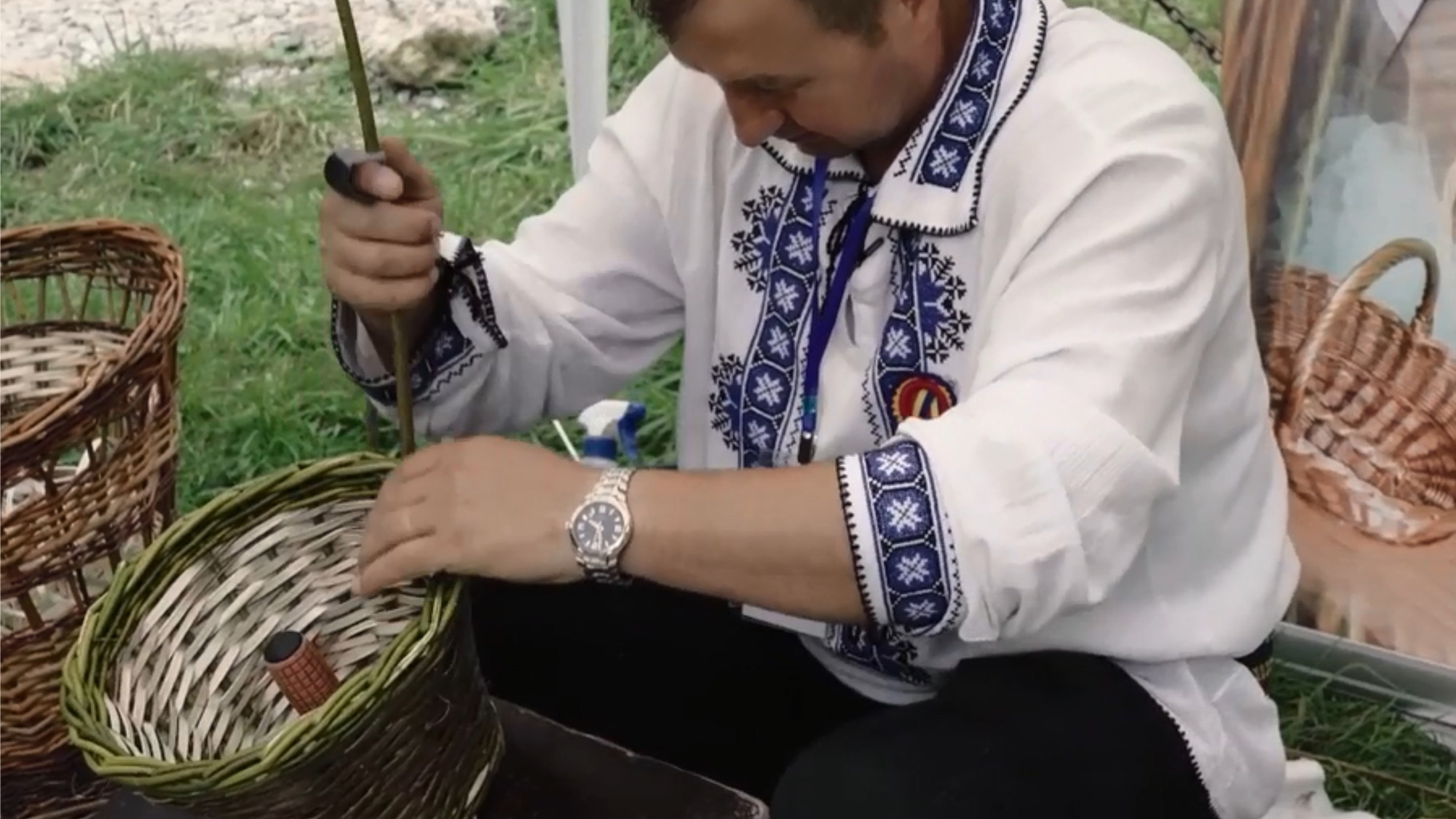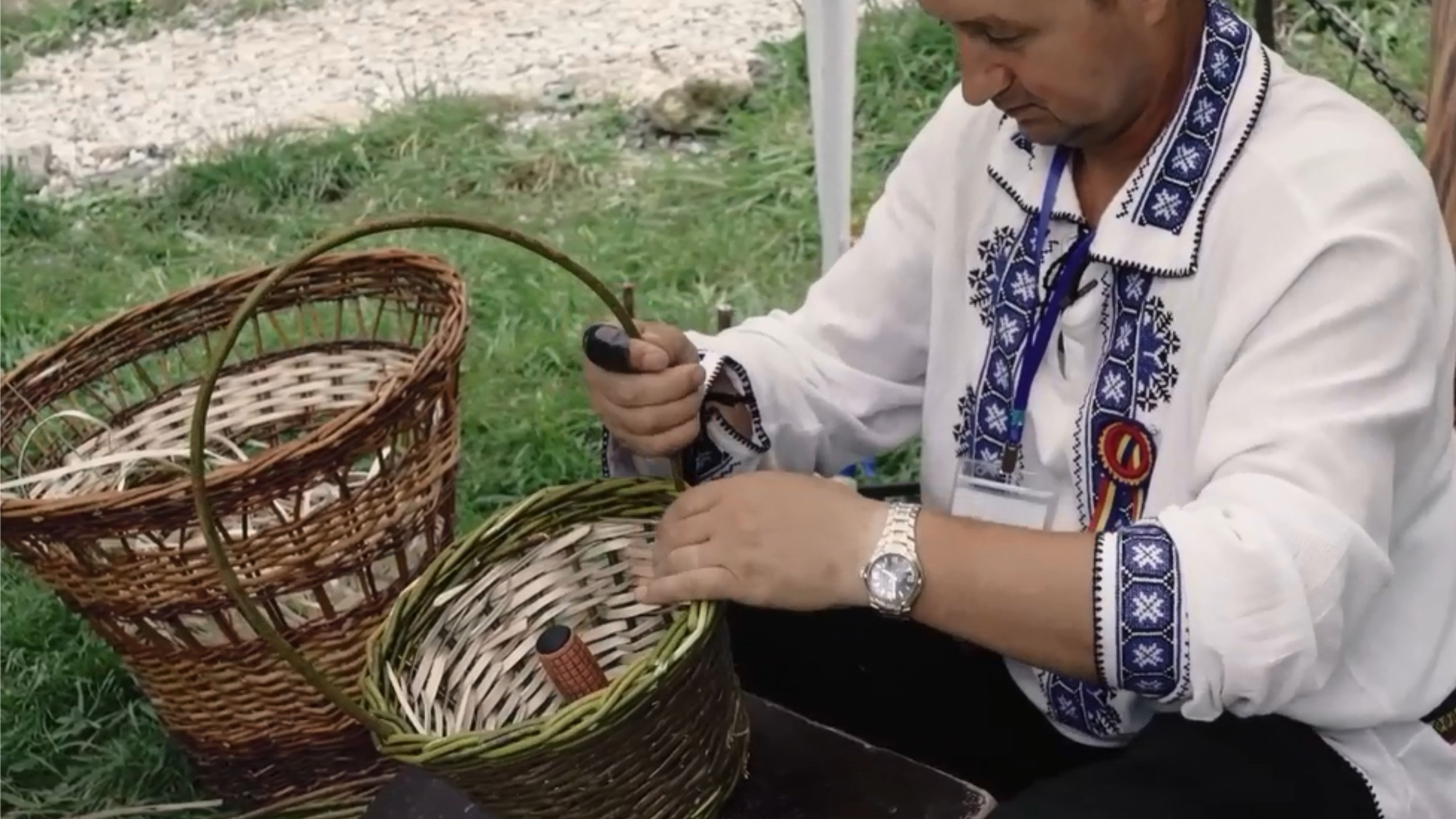Wickers weaving at Complexul National Muzeal ASTRA (RO)
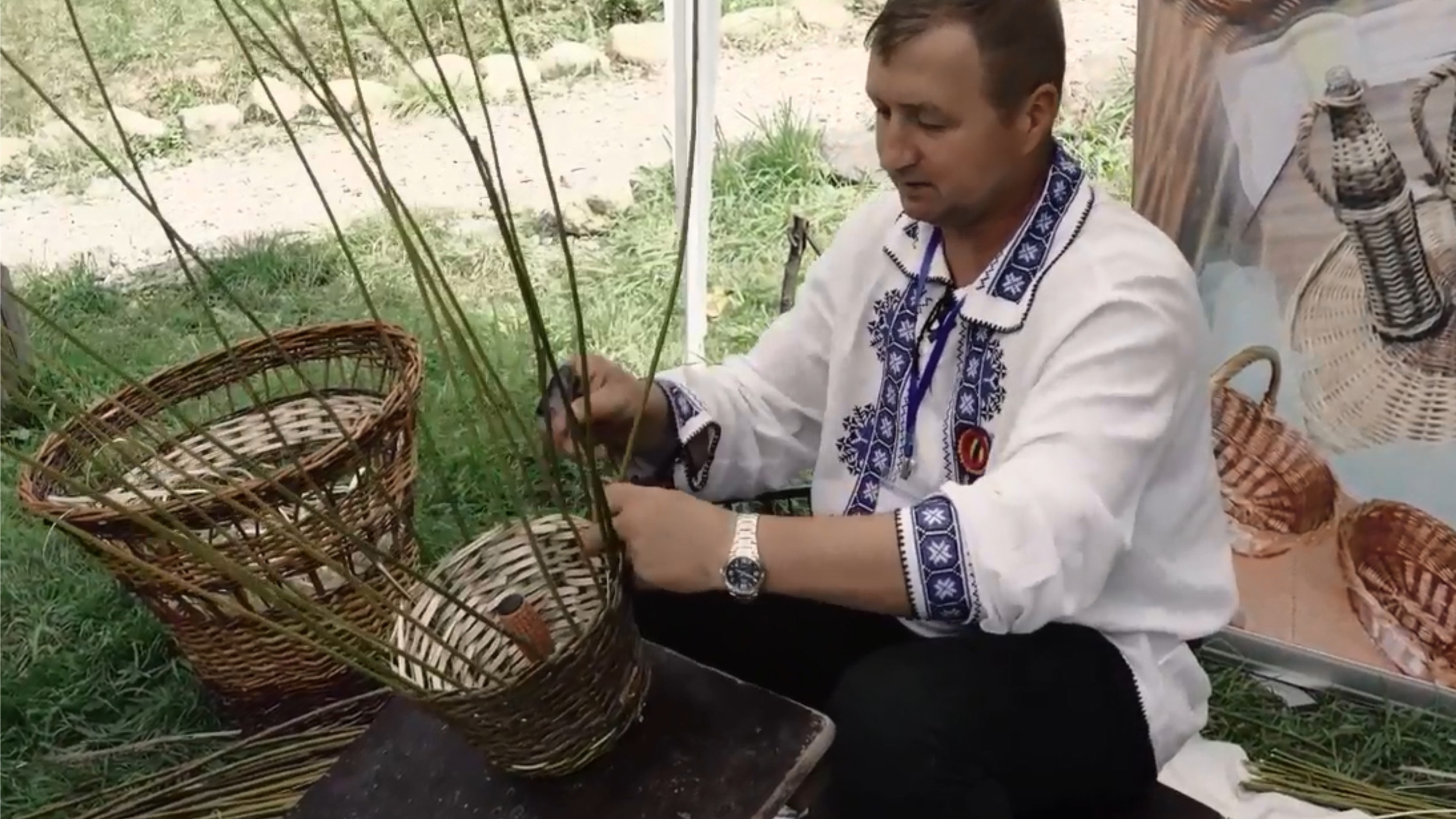
Name of the craft in English: Wickers weaving
Name of the craft in local language: Impletit nuiele de răchită
Local Language: Romanian
Type of craft: Traditional (craft is still practised)
Category of craft: Wood and furniture crafts
Short description of the craft:
Wicker weaving is an ancient craft whose purpose is to make items used for transportation: baskets. During the communist times, wickerwork was used to protect glass wine or brandy demijohns or bottles.
What is the historical /archaeological time period of the original craft:
Bronze Age, Iron Age, Roman Era, Early Middle Ages, High Middle Ages, Late Middle Ages, Newer Era, 1930-1950, Newest Era
What years was/is the craft practiced: 4000 BC - 2024 AD
Primary crafter: Ion Aurelian Giurgiu (RO)
Crafter's role in the documentation process: Daily occupation (more focussed on the craft and the result, less on the public)
The crafter has been practicing this craft for: 10-15 years
Is practicing this craft the main occupation of the crafter: No
What is the main occupation of this crafter: Mason
Does the crafter practice any other crafts: No
The crafter's motivation for learning this specific craft:
Local or family tradition (peer pressure form previous generations), To earn (part of) a living
Does the crafter have regular contact with colleagues: Yes
Number of colleagues: 5
Which describes the crafter's habitual working area best: Rural Workshop
How did the crafter learn this craft: From one or more persons
Please provide the context: In the family
Does the crafter teach this craft: No
This process is: To produce something from scratch
Which of these options best describes the work area during this craft activity: Rural workshop
Name each working technique (keyword):
• wattle • cutting • peeling • nick
Phase 1
Number and name of the phase:
1. Peeling the osier
Description of this phase:
It means to take the peel off the rods.
Time: ...
Phase 2
Number and name of the phase:
2. Making the rails
Description of this phase:
The rails are broke with the knife and then are finished and tapered with the pulling machine.
Time: ...
Tools used in this phase:
Knife, Pulling machine, Breaker
Installations used in this phase:
Work bench
Materials used in this phase:
Osier
Phase 3
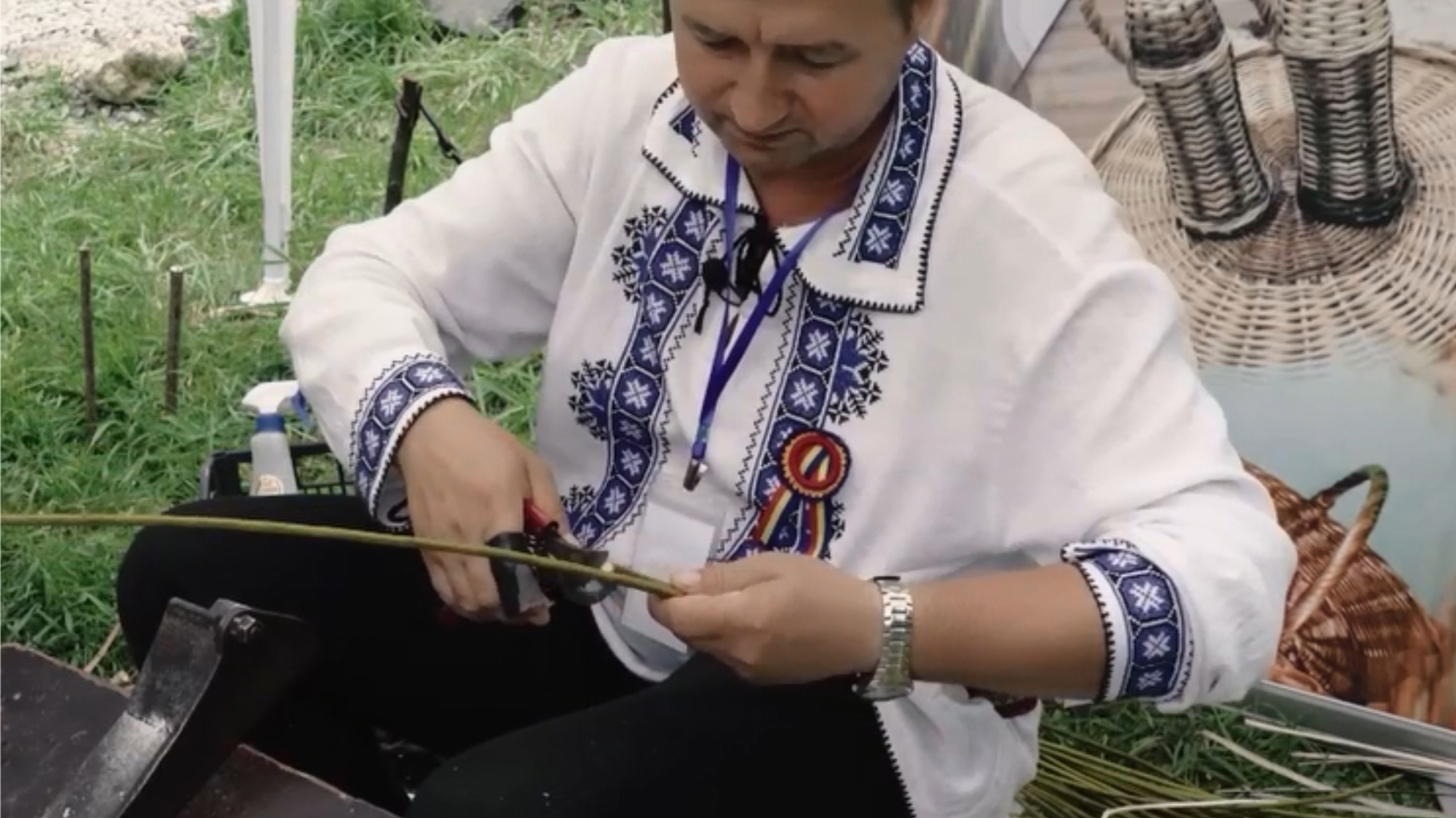
Number and name of the phase:
3. Making the rods
Description of this phase:
The rods are the pieces of wicker that give the size of the bottom of the basket. These are longer than 4 cm than the actual size of the basket to be able to work it.
Time: ...
Phase 4
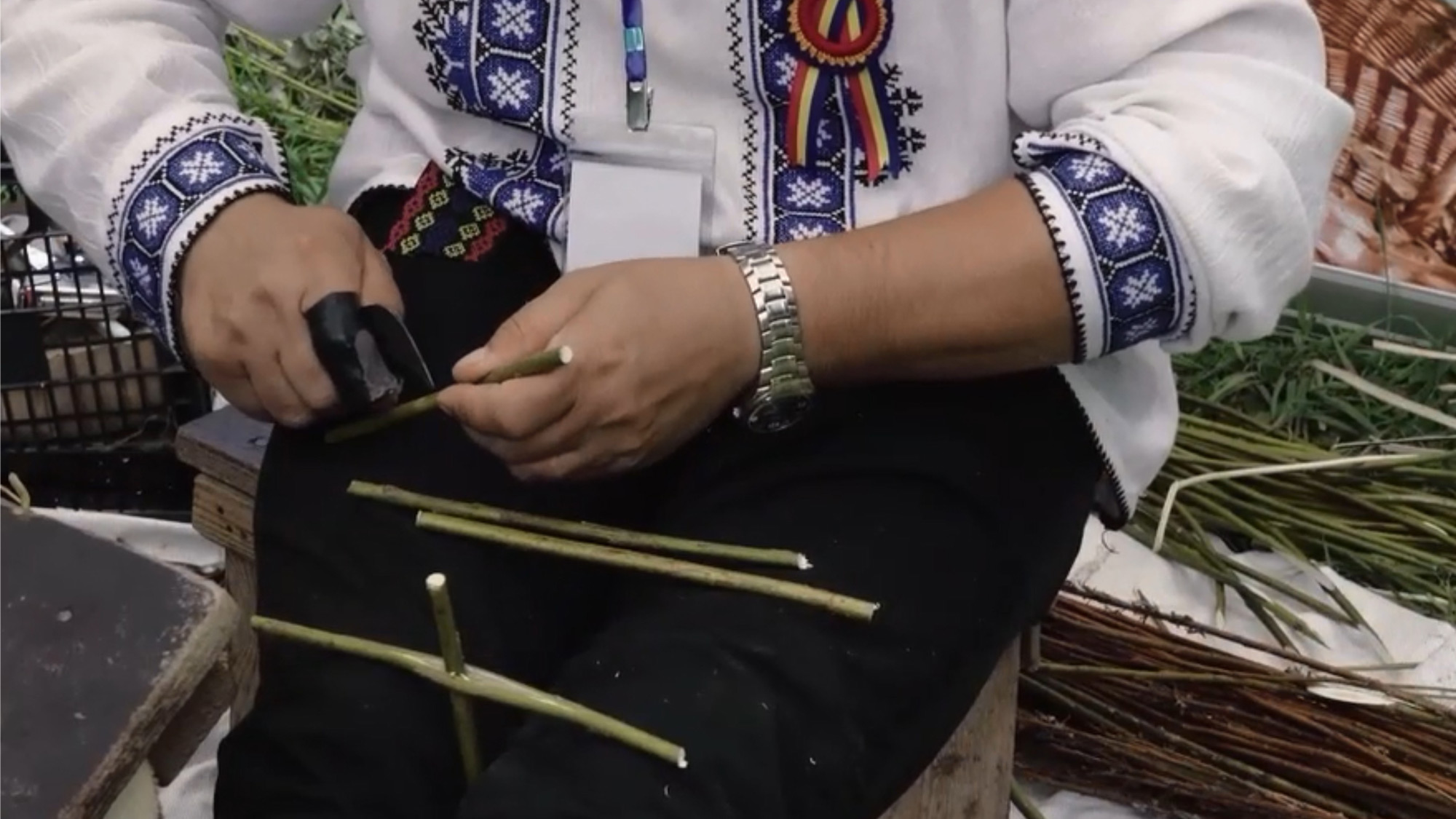
Number and name of the phase:
4. Making the framework of the bottom of the basket
Description of this phase:
Two of the sticks are held upright and the others are split in the middle and inserted into the uprghts to form the framework of the bottom of the basket. This framework is tied by weaving a stick around the sticks.
Time: ...
Phase 5
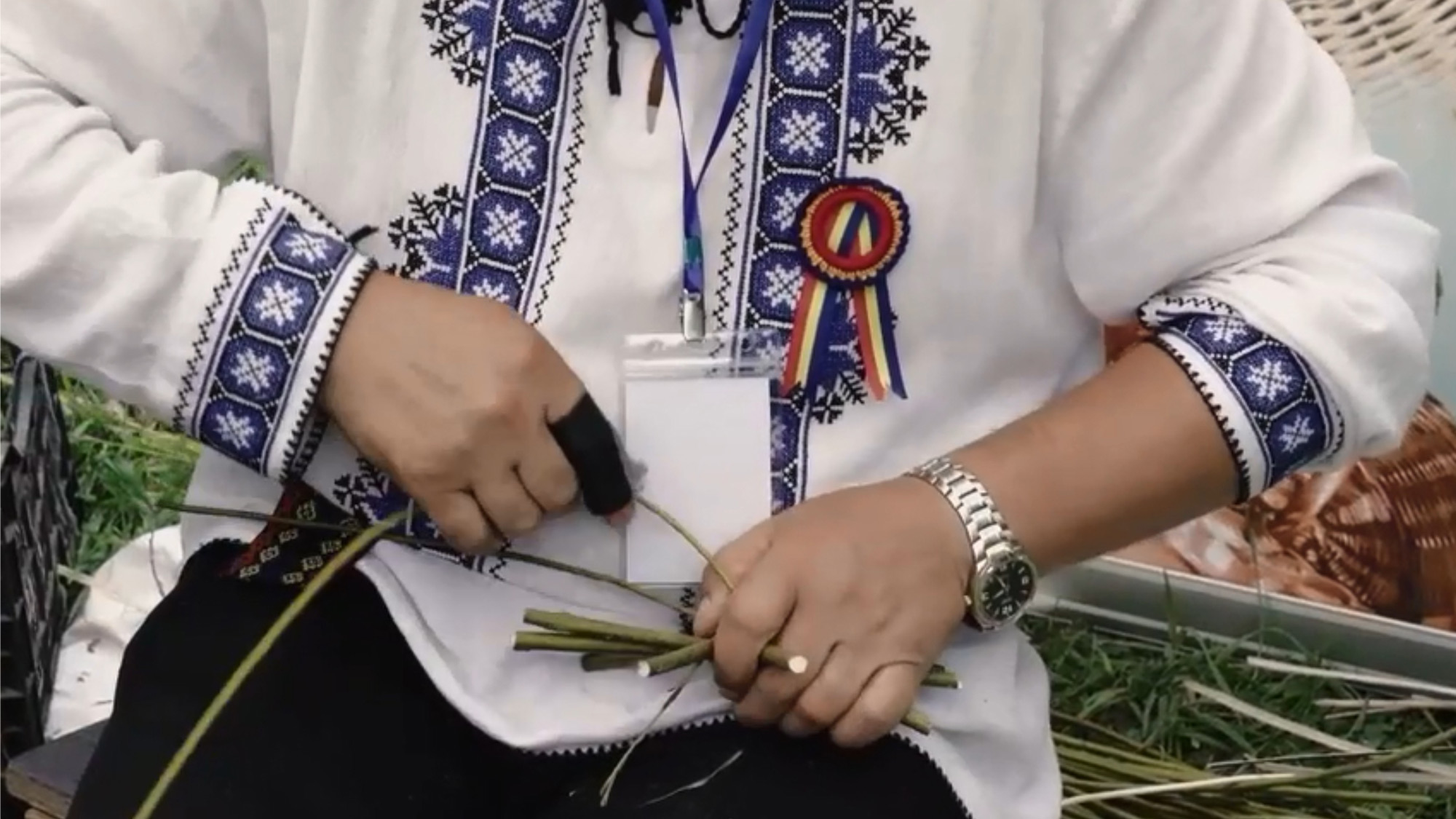
Number and name of the phase:
5. Weaving the bottom of the basket
Description of this phase:
The sticks are bent and the wicker a woven around them, by putting one over a stick and then under the next stick.
Time: ...
Phase 6
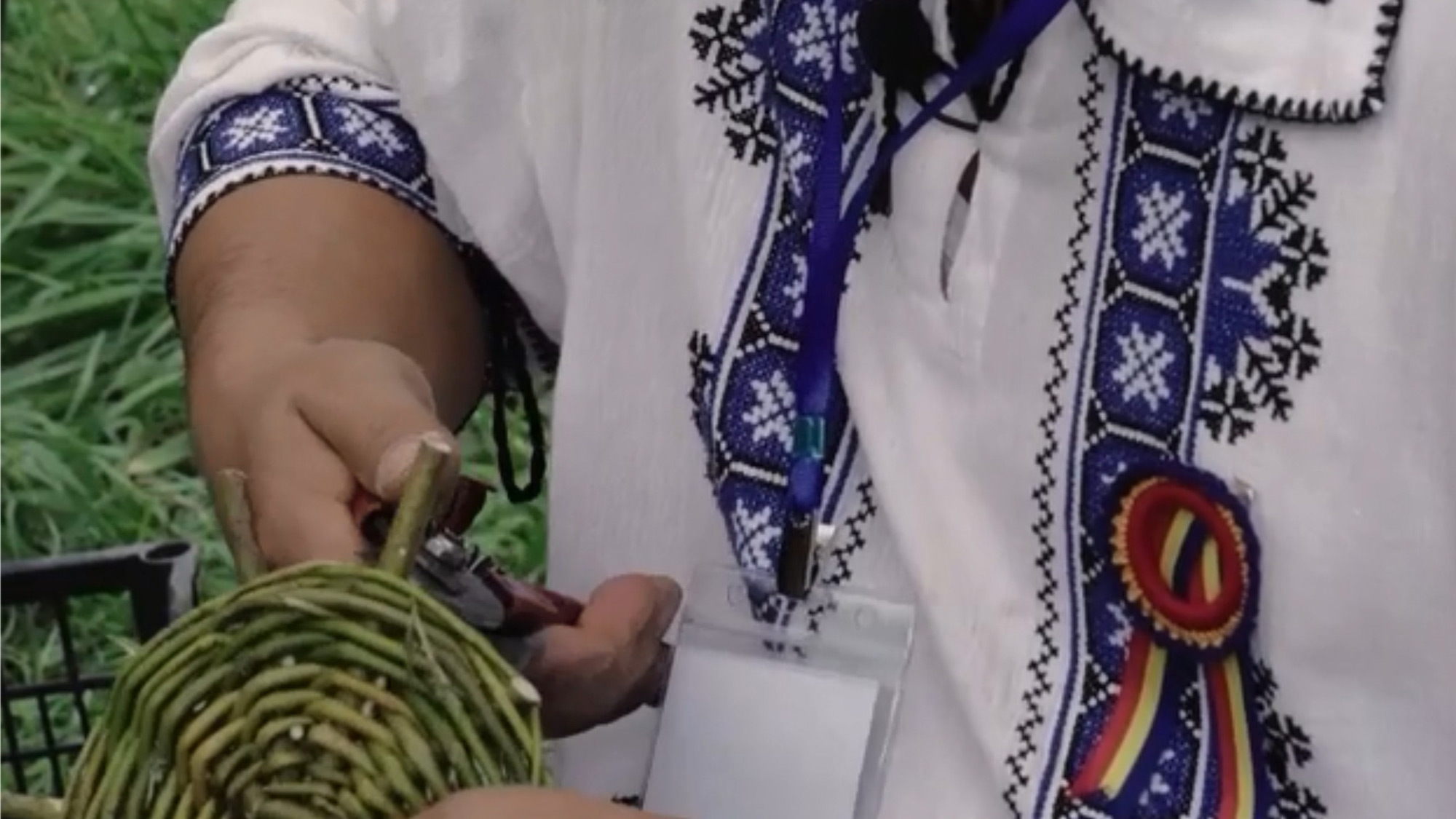
Number and name of the phase:
6. Cutting the sticks
Description of this phase:
Cut the sticks at the actual size of the basket.
Time: ...
Phase 7
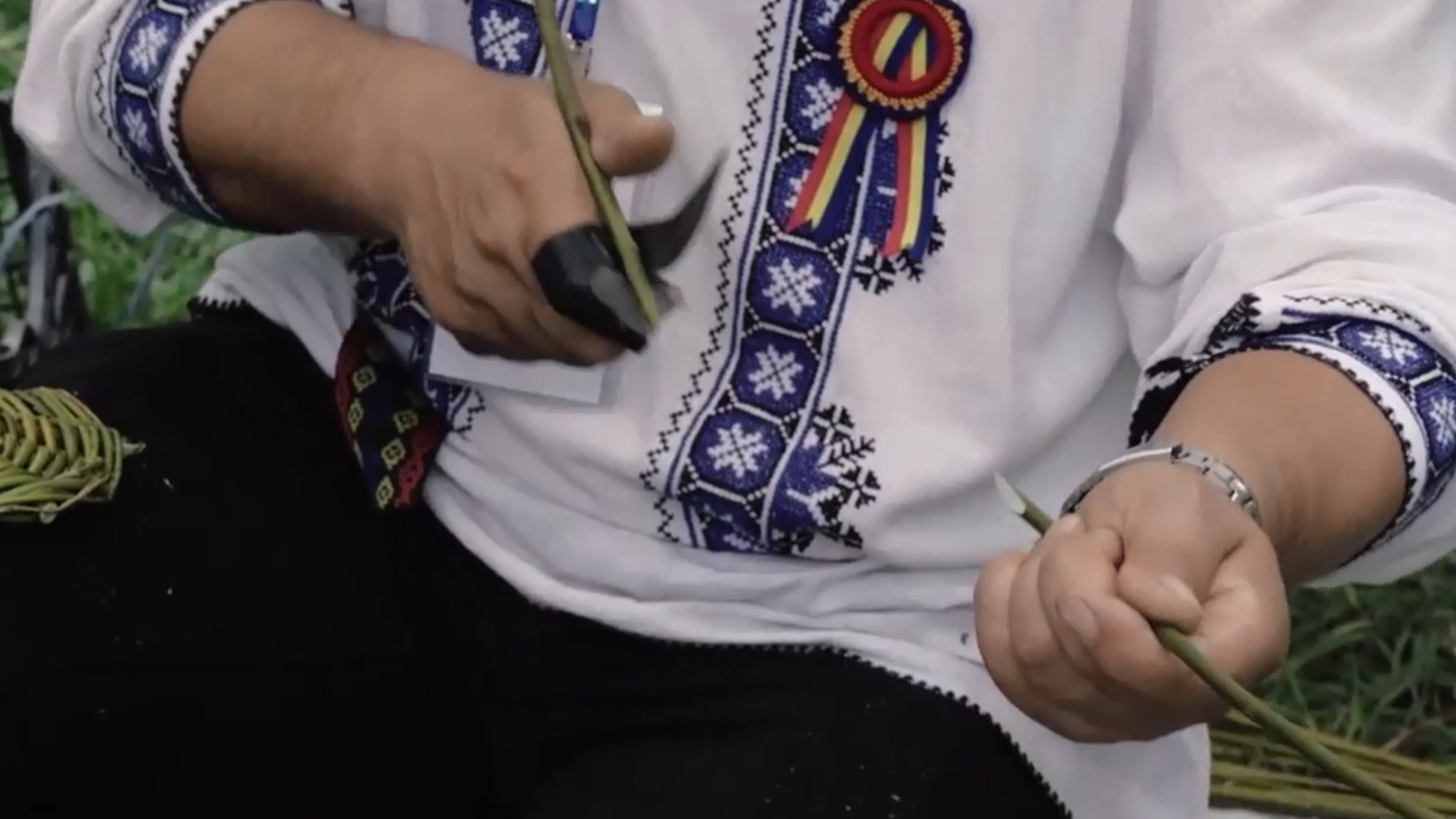
Number and name of the phase:
7. Preparing the poles
Description of this phase:
The poles are the osier wicker sharp at one end, used to lift the basket.
Time: ...
Phase 8
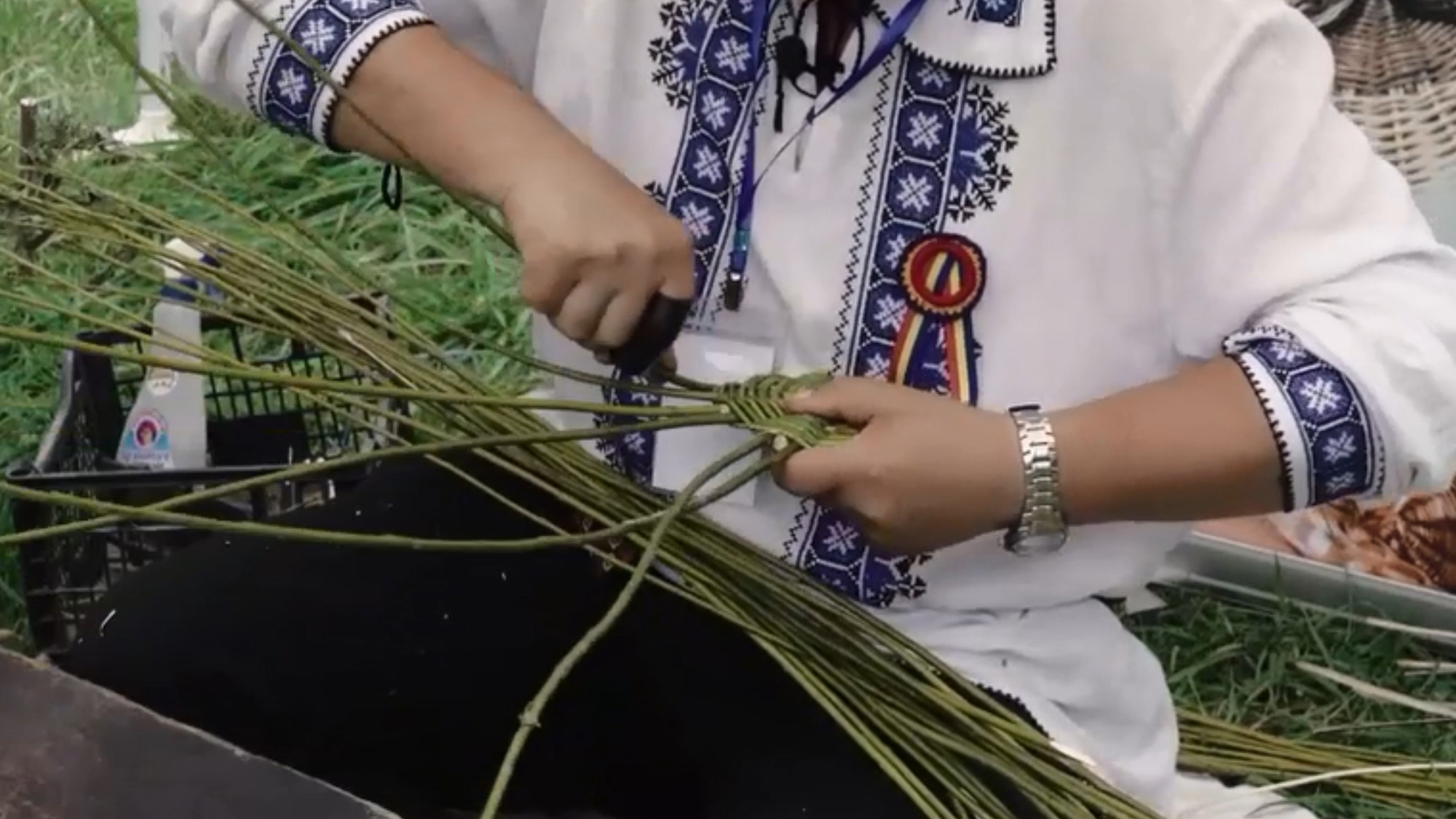
Number and name of the phase:
8. Fixing of the poles
Description of this phase:
For each stick, two poles are placed on each side of the pole, then all the poles are tied at the tips so that one can work the basket.
Time: ...
Phase 9
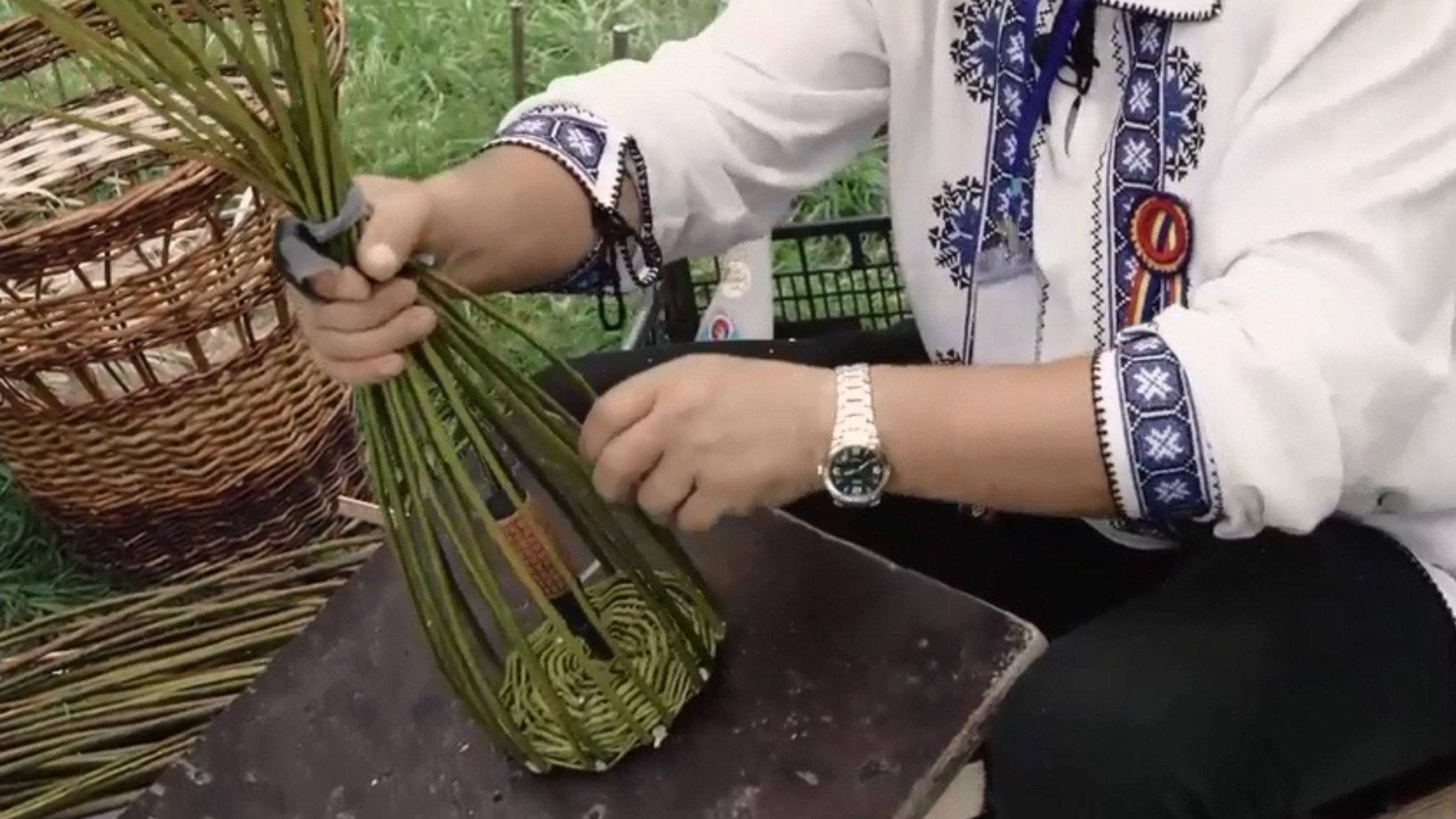
Number and name of the phase:
9. Fixing the basket on the work bench
Description of this phase:
A nail or a screwdriver is passed through the bottom of the basket and onto one of the holes of the headboard.
Time: ...
Tools used in this phase:
No
Installations used in this phase:
Work bench
Materials used in this phase:
No
Phase 10
Number and name of the phase:
10. Wickerwork
Description of this phase:
The wicker or the rails are woven three by three under a pole and then over the next two poles. This step is repeated until reaching the desired highness. The woven wicker are beaten to tighten up , that is to remove the empty spots among the wickerwork. This step is done after each wicker braiding until reaching the desired highness.
Time: ...
Tools used in this phase:
No
Installations used in this phase:
No
Materials used in this phase:
No
Phase 11
Number and name of the phase:
11. Finishing the basket
Description of this phase:
The poles are braided just like the wicker under a pole and then over the next two ones, the tips are cut.
Time: ...
Tools used in this phase:
Scissors
Installations used in this phase:
No
Materials used in this phase:
No
Phase 12
Number and name of the phase:
12. Placing the handle
Description of this phase:
The handle is made from a twig that is sharpened at the thick end and is placed from above through the plaited basket, that it is bent above the basket to see how long it should be, after which it is cut at the length. The other tip is sharpened and it is placed through the plaited basket.
Time: ...
Phase 13
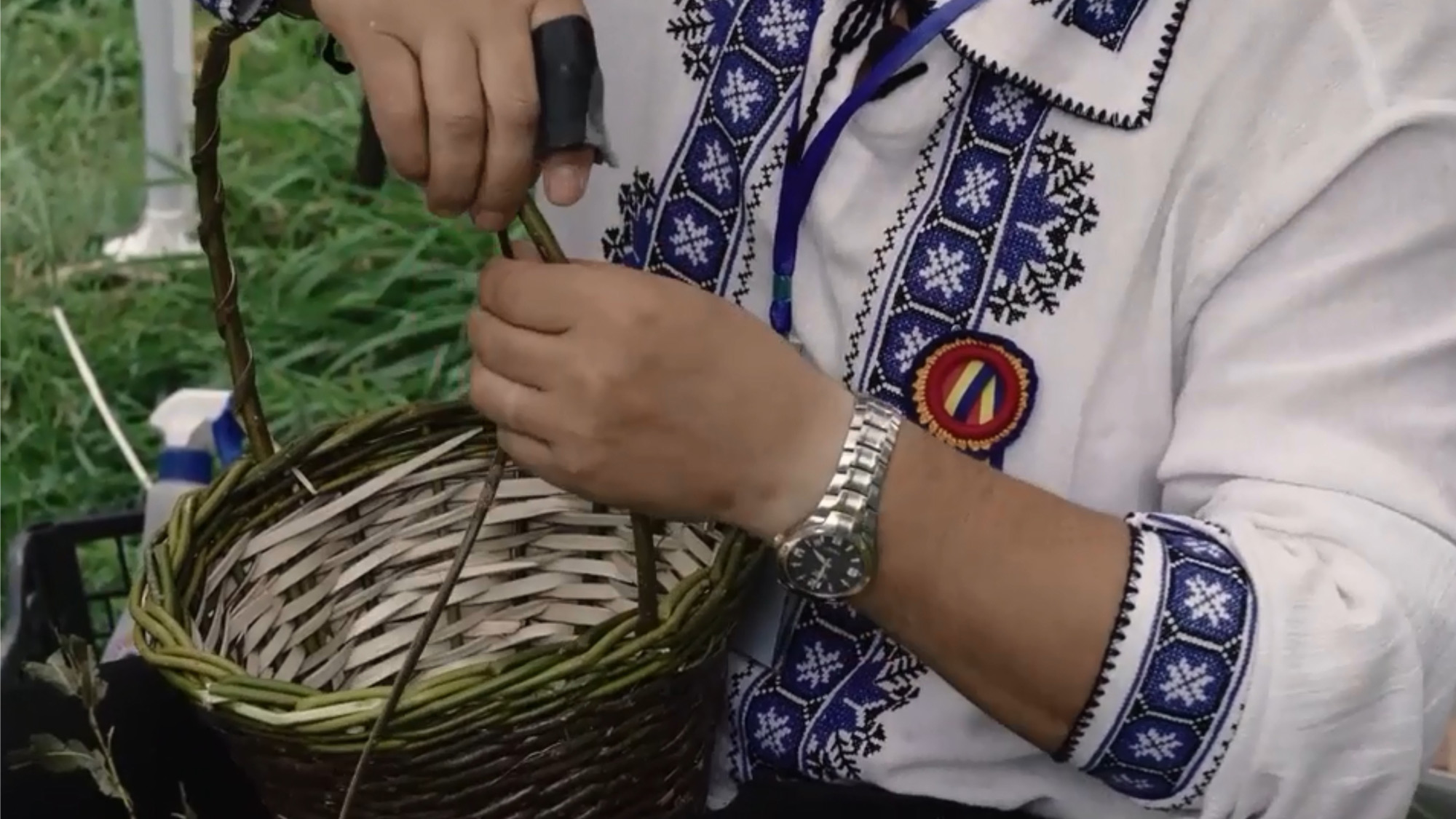
Number and name of the phase:
13. Coating the handle
Description of this phase:
A piece of rail is inserted in the margin ot the basket, next to the handle, twisting it all its length, after which the tip is twisted among the plainted wicker ot the edge of the basket.
Time: ...
Does the crafter model this craft activity on historical or archaeological sources: No
Did the crafter diverge from historical/archaeological accuracy to adapt the process: No
Has the crafter developed new techniques or improved the activity over time: No
Has the crafter identified any gaps in their knowledge or experience: No
Describe the crafter's approach to a tidy workshop, hygiene and other best practices:
In the workshop there are special places to keep the raw material that is about to be used.
Describe the crafter's approach to clean-up and disposal of waste products:
In order to keep the workshop clean, the scraps are gathered in a basket during the process or only at the end.
Describe any by-products of the craft activity that could have further use:
Some of those scraps can be used to make other objects, the useless ones are used for making the fire.
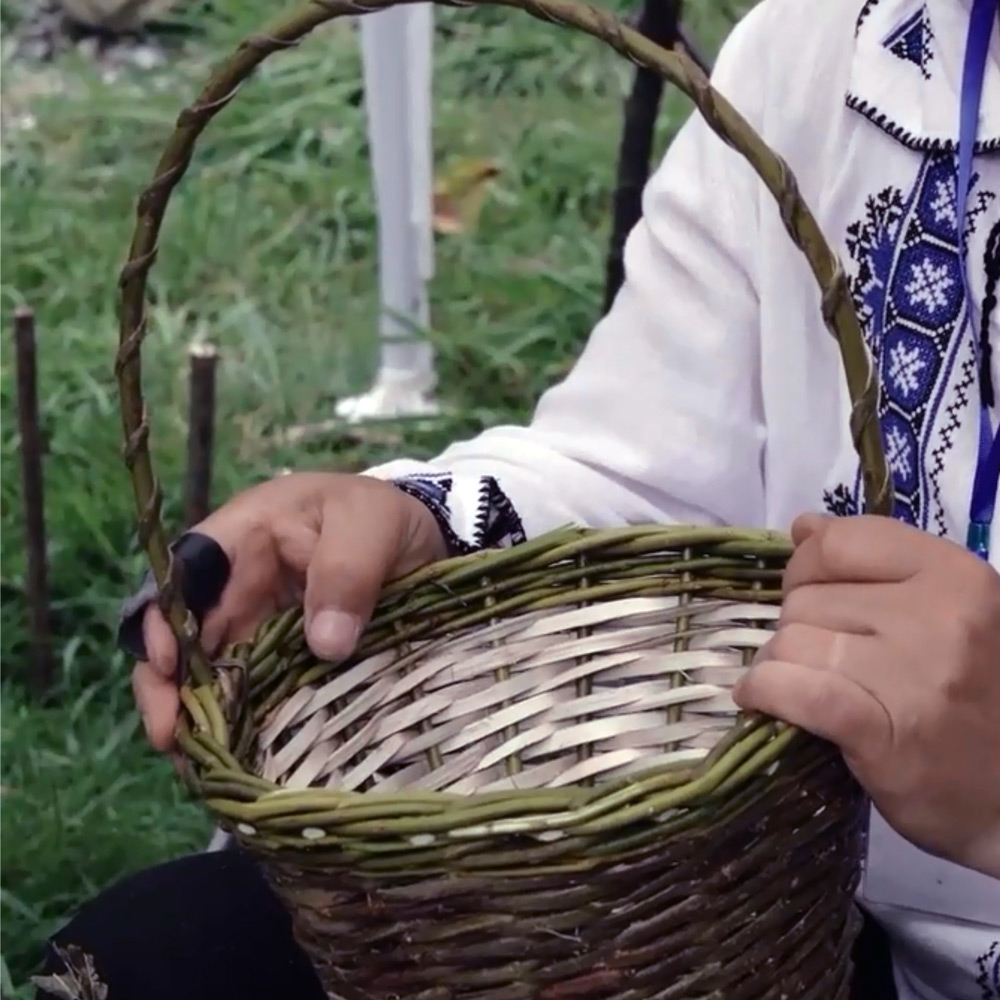
Basket, to keep and transport different things (vegetables, fruits, food, fire wood)
Name of the product in English:
Basket
Name of the product in local language:
Coș
Describe the product:
A round or oval container of variable sizes made of wickerwork.
What are the outcome or product's purposes:
Practical use, Decorative use
Describe how the product or outcome is used:
To keep and transport different things (vegetables, fruits, food, fire wood)
Describe who typically uses the product or outcome:
Anyone for daily activities
In which context is the product or outcome typically used?
Daily activities
What happens with the product or outcome? Is it distributed and how:
Sale
How does the product or outcome reach the user?
Shops, Markets / Fairs, From the workshop, Online shop / website


